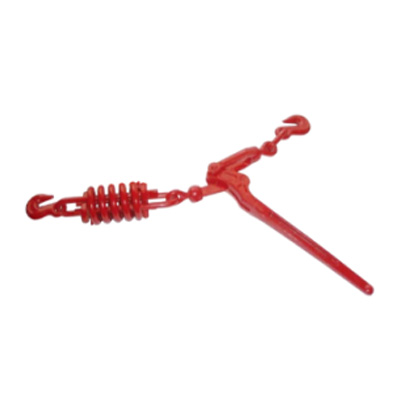Information about the spring-loaded load binder hook
2024-01-02
A spring-loaded load binder, also known as a spring-loaded lever binder, is a type of tensioning device used in the trucking and transportation industry to secure loads. It features a lever with a spring-loaded mechanism designed to make the tensioning process more efficient and user-friendly. The load binder is typically used with chains for load restraint. Here are key features and information about the spring-loaded load binder hook:
1. Lever and Spring Mechanism:
- The spring-loaded load binder is equipped with a lever that incorporates a spring-loaded mechanism.
- The spring mechanism assists in quickly taking up slack in the chain and applying tension to secure the load.
2. Tensioning Process:
- The lever is used to tighten the chain and create tension. The spring-loaded mechanism helps in maintaining tension during the binding process.
3. Handle and Grip:
- The load binder typically has a handle that provides a comfortable grip for the user during the tensioning process.
4. Ratcheting Alternative:
- While traditional ratchet-type load binders use a ratcheting mechanism, the spring-loaded binder offers an alternative design that simplifies the tensioning process.
5. Versatility:
- Spring-loaded load binders are versatile and can be used with various chain sizes and types.
- They are commonly used in the trucking, transportation, and cargo industries for securing loads on flatbed trailers.
6. Working Load Limit (WLL):
- Like other load binders, the spring-loaded version is rated with a Working Load Limit (WLL) indicating the maximum load it is designed to handle safely.
7. Ease of Use:
- The spring-loaded mechanism enhances the ease of use, making it quicker and more straightforward to tension and secure the load compared to some traditional binders.
8. Safety Considerations:
- Proper training is essential for users to safely operate spring-loaded load binders.
- Users should follow manufacturer guidelines and inspect the equipment regularly for signs of wear, damage, or malfunction.
9. Regulations and Standards:
- Spring-loaded load binders should comply with relevant regulations and industry standards to ensure safety and effectiveness in load restraint.
10. Usage Tips:
- Users should follow proper techniques for tensioning loads and use appropriate personal protective equipment (PPE) when handling load binders.
It's important to note that while spring-loaded load binders can offer advantages in terms of ease of use, users should select the appropriate type of load binder based on the specific application and load requirements. As with any load-binding equipment, safety measures and compliance with industry standards are paramount to ensure the securement of loads during transportation.



